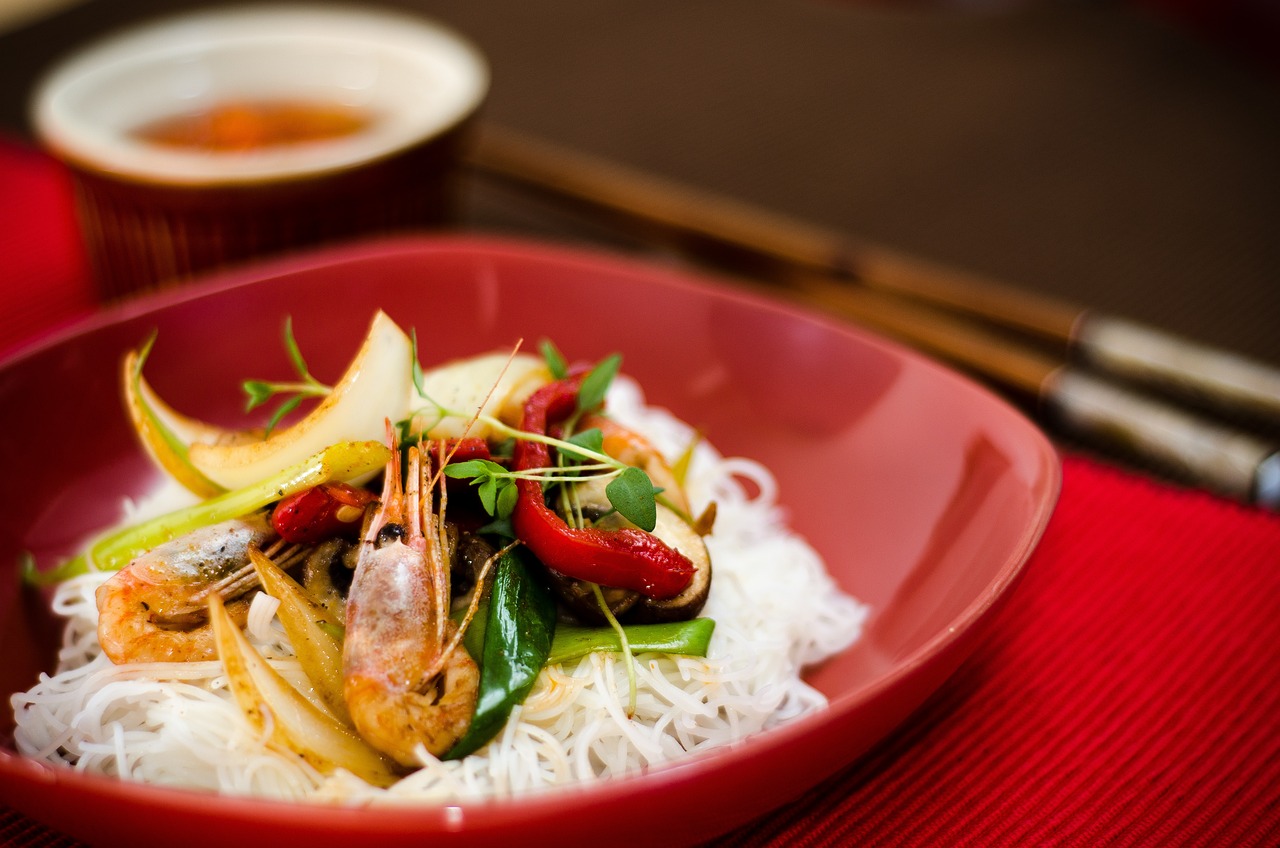Greek shrimp saganaki is a classic meal that includes medium-sized or even big shrimp or prawns that have been deglazed with ouzo to give them more flavor. It is an adaptation of the traditional cheese saganaki recipe, a well-liked Greek snack that is typically served in a baking dish with two handles to facilitate serving. The word “sagani,” used to describe a particular style of the two-handled frying pan, is the source of the dish’s name. Melt-in-your-mouth cheese, feta, and mussels are three of the most popular traditional Greek dishes prepared in saganaki pans.
Every local taverna in Greece serves this shrimp saganaki baked with feta cheese, which is a traditional Greek appetizer. The savory appetizer is often served right from the skillet it was cooked in with lots of crusty bread to sop up the luscious tomato sauce, as anybody who has visited Greece knows.
Greek Shrimp Saganaki Recipe
The term “saganaki” alludes to the particular style of heavy-bottomed pan used to prepare this dish, typically one with two handles for portability. The more popular cheese saganaki, which is sizzling melting cheese that has been pan-seared in the same type of skillet and then flamed, is more well-known to most people.
Ingredients:
Shrimp Saganaki is a pretty easy dish to make, like much Greek cuisine. Three ingredients, in addition to the staples from your pantry, will make a huge difference in your Saganaki. The tart feta cheese, the plump, luscious tomatoes, and of course the authentic Greek Ouzo are what make it so special.
Feta:
The primary component of a traditional salad is feta. Greek Garides Saganaki gives it the mouthwateringly sour flavor that so many Greek meals share! So be sure to pick up some extra virgin olive oil and some high-quality traditional Greek feta cheese from your neighborhood market!
Tomatoes:
You’ll need some ripe, juicy tomatoes. However, it could be difficult to obtain tomatoes that are totally ripe if you’re cooking shrimp saganaki in the winter. In that case, choose some whole San Marzano (plum) tomatoes from a can, and don’t worry. Be sure to strain them before incorporating them into your prawn saganaki, though! Last but not least, you can add a pinch of sugar to canned tomatoes to balance out their acidity if you think they are a bit too sharp.
Ouzo:
You’ll require some Ouzo, at long last. It is simple to find in stores or at your preferred online beverage retailer, and it goes well with any Greek cuisine. But in this case, I use it to give the prawns a little extra flavor. If you can’t locate it anywhere, Pernod, a French liqueur with anise flavor, would work similarly.
- Twenty-five medium prawns
- 4 ripe, juicy tomatoes, cut finely
- 1 red onion, finely sliced, along with your preferred amount of hot chilies
- 2 sliced spring onions (optional)
- Greek liqueur Ouzo, made with two sliced garlic cloves, 60 ml (1/4 cup).
- 200-250g of crumbled or cubed feta cheese, along with 2 tbsps of freshly chopped dill or parsley (8 oz.)
- salt and freshly ground pepper with olive oil
- and sweet paprika (optional)
Method:
The preparation of shrimp saganaki is relatively simple, but there are a few things to keep in mind to ensure that it tastes great!
- Peeling and cleaning the shrimp is the first step in making this Greek shrimp saganaki recipe.
- Continue putting the sauce together. To make the sauce for this recipe for shrimp saganaki, chop the fresh tomatoes into small cubes and let them strain in a sieve to remove any excess water.
- Start with the saganaki sauce for the shrimp. The chopped onion is added to the hot olive oil and sautéed for one minute.
- Add the minced garlic, chili peppers, and salt and pepper to taste. For one more minute, sauté all the ingredients together.
- When the sauce starts to thicken a little, add the chopped tomatoes, cover with the lid, bring to a boil, and then simmer for about 5 minutes.
- The shrimp for this shrimp saganaki recipe should be sautéed in the interim. On both sides, season the shrimp with salt and pepper. 3–4 tbsps of olive oil are added to a big pot that’s been heated over medium heat. Add the shrimp, cook for one minute, then add the ouzo to deglaze the pan.
- Stir after adding the shrimp and sauce to the saucepan. Feta cheese cubes or crumbles should be sprinkled on top of the shrimp saganaki. Cover the pan and heat for an additional two minutes, or until the feta begins to melt.
- Serve the shrimp saganaki while it is still hot and garnish with chopped parsley or dill. With a nice glass of ouzo, savor this authentic Greek recipe for shrimp saganaki!
Can We Prepare it Ahead of Time?
They are always prepared and consumed right quickly, much like all Saganaki recipes. You can prepare the sauce in advance if you’d like to save some time. Follow the instructions up to sautéing the prawns, then stop.
When the sauce is finished cooking, let it cool before storing it for two to three days in an airtight container. Reheat the sauce and proceed with the rest of the recipe when you’re ready to make the shrimp saganaki.
How Should you Preserve Leftover Shrimp Saganaki?
With shrimp, you should always exercise a little caution. In order to prevent the shrimp from rotting, you must allow any leftovers to chill for no longer than an hour before storing them. After that, place the leftovers in a small airtight container and keep them in the refrigerator. They can last for two to three days. Simply reheat till steaming hot in a frying pan and serve.
What Should be Paired with Shrimp Saganaki?
Greek shrimp Saganaki can be served as an appetizer or as a tiny portion of a mezedes dish. Over-cooked orzo pasta makes a delicious main course and is a popular way to serve this dish in Greece. Additionally, it would go great with hot rice or buttery mashed potatoes. Enjoy it with some crusty bread and possibly some ouzo as well!
How to Devein and Peel shrimp?
Even while we adore how convenient a package of peeled and deveined shrimp is, shell-on shrimp is unquestionably the more economical choice. And although washing shrimp can appear difficult, it’s really fairly easy! You only need a little bit of time. This is how:
If the head is still attached, slice it off with a sharp knife at the spot where it connects to the body.
After that, remove the legs.
- After the legs are taken off, it should be simple to peel away the segmented shell, starting from the shrimp’s head side. Although you can remove the tail if you choose, I prefer to leave it on. The shells can be frozen for later use; they make wonderful seafood stock!
- The decision to devein the shrimp is largely a matter of taste. If you consume the vein, it won’t hurt you, but it may taste bitter or have a sandy texture. Make an incision along the shrimp’s outside with a tiny, sharp knife (like a paring knife) to remove it. The vein should be visible to you (it is thin and black). Simply cut it out with a knife, then throw it away. Clean the shrimp well in cold water.
Health Benefits
1. Weight Loss and Maintenance
Shrimp has few calories but a lot of protein and other nutrients. Consuming foods that are high in protein and nutrient-dense is constantly suggested in order to lose weight and keep a healthy, lean body mass.
2. Eye Health
Astaxanthin has proven to be a very important component in preserving good eye health, including guarding the retina against oxidative damage, particularly from prolonged exposure to sunshine. According to preliminary research, astaxanthin may help solve problems affecting the center of the eye when combined with other nutrients.
3. Bone Strength
Phosphorus and vitamin D are both found in shrimp and shellfish. Together with calcium, the nutrients provided can build bones, lowering the risk of osteoporosis and future bone fractures.
4. Mood Enhancer and Brain Health
Tryptophan, a substance found in shrimp, is suggested to stimulate the release of the mood-enhancing hormone serotonin. The omega-3 and vitamin B12 concentrations of shrimp may help to maintain brain health, keep it awake and bright, and guard against Alzheimer’s disease.
4. Prevents Cancer
Astaxanthin and omega-3 fatty acids both have powerful antioxidant capabilities that may have preventive and inhibitory effects on cancer, slowing the spread of malignant cells. Intriguingly, in addition to eating shellfish, scientists are now examining their extraordinary eyesight for hints in cancer diagnosis.
6. Skin Defense
Supplementing with astaxanthin helps lessen skin wrinkling by enhancing skin elasticity and providing skin moisture, in addition to sunscreen and other skin-protection measures. Additionally, astaxanthin can lessen skin cancer risk by minimizing UV-induced skin damage.
7. Reduces the Risk of Heart Disease
Although concerns about eating shrimp have been raised because of its high cholesterol level, study shows there is actually no downside to enjoying this popular mollusk. Due to the omega-3 fatty acids included in shrimp, it has been demonstrated that eating shrimp can lower levels of LDL (the “bad”) cholesterol and triglycerides while increasing levels of HDL (the “good”) cholesterol. Omega-3 fatty acids, which play a crucial role in heart health and have anti-inflammatory qualities, are another nutrient found in shrimp.
8. Women’s Health
Shrimp is a crucial food that can improve the health of women. Hot flashes, joint discomfort, and moodiness that frequently appear during menopause have all been proven to be diminished by astaxanthin. Premenstrual syndrome, popularly known as PMS, is characterized by mood swings, sensitive breasts, food cravings, exhaustion, irritability, and depression. Omega-3 fatty acids may help to reduce these symptoms.
Reference: So different, yet so alike Pancrustacea: Health benefits of insects and shrimps
Conclusion
A glass of perfectly cold white wine goes especially well with Greek prawn saganaki at any time of year. However, most recipes call for approximately 60 ml of olive oil and an entire block of feta cheese, making it a normally highly fatty dish that you probably wouldn’t want to eat throughout the week. A healthy wrap that can be had as a quick meal with a salad or as a lunch on the go. An excellent aniseed flavor that usually comes from the generous amount of ouzo that is added to the dish is provided by the optional fennel seed.

